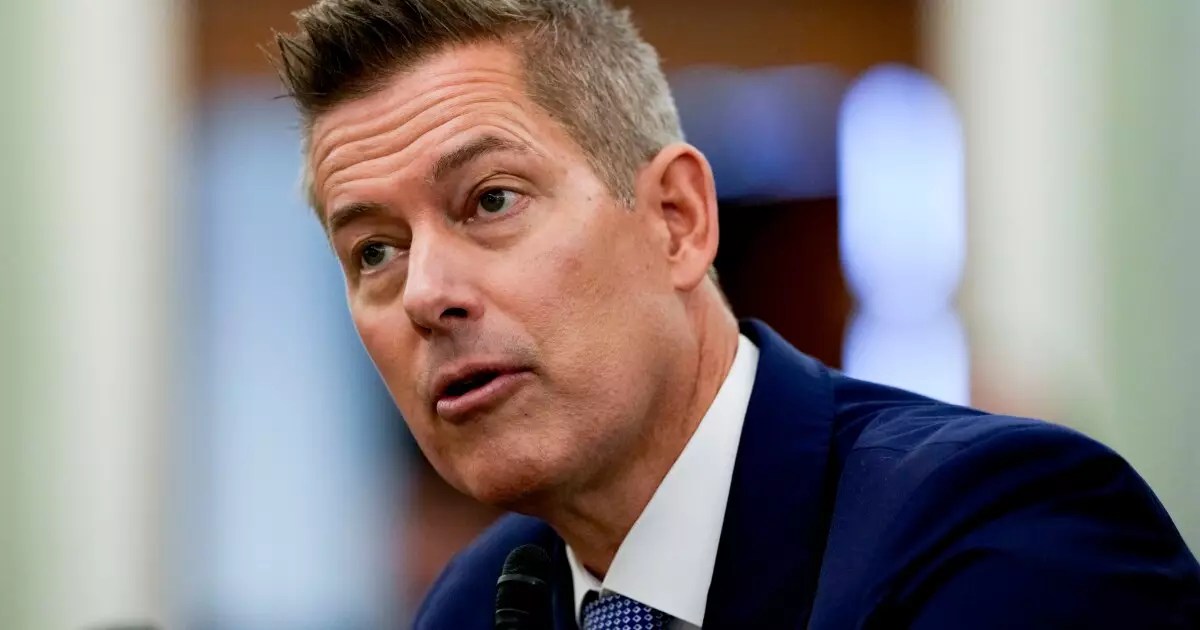In a striking shift from the previous administration’s approach, the U.S. Department of Transportation (DOT) intends to abandon environmentally laden stipulations that have cluttered infrastructure funding. Under Transportation Secretary Sean P. Duffy, the terse message is clear: America needs practical, reliable infrastructure that prioritizes moving people and goods. This return to formulaic funding methods is applauded, not just by political allies, but also by industry voices tired of convoluted grant processes that have historically come with excessive strings attached. Fundamentally, this change offers a semblance of stability and predictability—qualities sorely needed in today’s regulatory climate.
The past administration indulged in what many viewed as a progressive overreach—pushing an environmental agenda at the cost of practical governance. By redefining how transportation policies are framed, officials like Duffy are signaling an end to the era of regulatory complexity that hampered progress. When a federal agency starts rescinding numerous memorandums that have complicated state-driven decisions, it’s an explicit recognition that simplicity and clarity resonate better with taxpayers and stakeholders.
The Uncertain Future of the Highway Trust Fund
With the Highway Trust Fund struggling to stay afloat and the gas tax increasingly failing to reflect modern economic realities, reauthorizing surface transportation legislation has never been more critical. The infusion of $118 billion from the Infrastructure Investment and Jobs Act (IIJA) may have temporarily bandaged the fund, but fiscal sustainability remains fragile. What’s troubling is that gaps in funding will soon be exacerbated as we approach the 2026 expiration of these emergency funds.
It is baffling how we have reached a stage where lawmakers deem it necessary to dialogue about reallocating resources focused on roads and bridges instead of prioritizing trendy bike lane initiatives and expansive public transport systems. While urban areas have made strides in alternate forms of transportation, the American infrastructure must get back into a core-priority mindset: reliable roads. Transportation Committee Chair Sam Graves rightly highlights this, steering conversations towards what matters for the average American driver, not the urban elite.
Weaknesses of Federal Grants and New Policies
Grants from the DOT that emerged from the last administration often required municipalities to match funds through complex frameworks involving public finance. Such a bureaucratic tangle paradoxically stifles the innovation and growth that these policies aim to encourage. Organizations like the American Association of State Highway and Transportation Officials (AASHTO) are rallying around the idea of a more formula-based funding model, which promotes the historical framework of state administration.
The pushback against discretionary funding reflects a broader frustration—federal programs should not feel like a game of chance. If states know what to expect, they can adequately plan their infrastructure needs without the fear of arbitrary federal mandates. This is particularly salient as we navigate a landscape marked by unreliable funding that hampers long-term planning and hampers economic growth.
Electric Vehicles and the Need for New Policies
As we delve into the nuances of modern transportation, we must confront the pressing issue of electric vehicles (EVs). While they represent the future of transportation, their owners contribute nothing to the fueling of our roads through gasoline taxes. This discrepancy indicates an urgent need for a cohesive federal policy governing this new sector before it spirals out of control, leaving already-strapped funding initiatives further weakened.
Senator Shelley Moore Capito has voiced a moderate yet important plea to focus on formula-based funding rather than on discretionary dollars that do little to address the real issues at hand. It is bewildering that a transportation agenda can overlook a significant revenue source as the landscape shifts toward electric vehicles. How can sustainable practices be integrated without addressing the financial models that support our road systems?
Safety Concerns and Accountability in Oversight
Inevitably, while transitioning towards these new infrastructure paradigms, the conversation must also encompass accountability—especially as incidents of grasping safety violations continue to unfold in airports and transit systems. The public has every right to demand operational transparency, and Secretary Duffy’s hurried announcement regarding a probe into diversity, equity, and inclusion (DEI) hiring practices at the FAA underscores this need for vigilance. Ensuring the operational integrity of federal agencies is critical if we are serious about reviving the trust of the American people in their government.
In essence, as we witness the reorientation of infrastructure policies, it’s crucial to remain vigilant about the implications these changes carry, not just economically but also in terms of safety and efficacy. The United States stands at a pivotal moment, where the aspirations for robust, functional infrastructure can truly align with the needs of its citizens—or become mired in speculative politics once again.


Leave a Reply